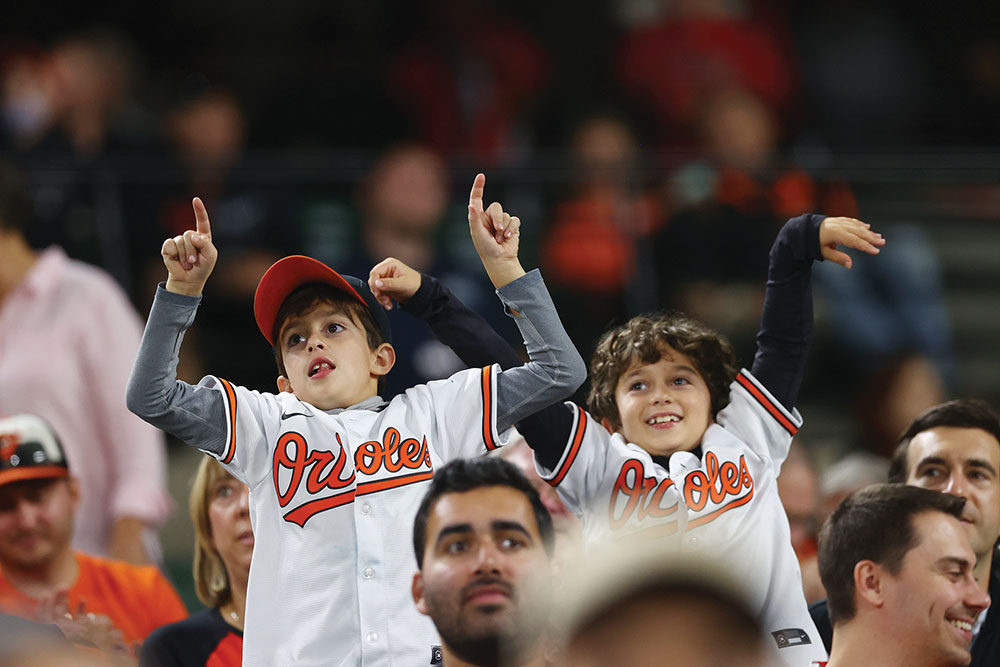Vaping, Juuling, e-cig(arette)s … whatever the name, at this point, experts and doctors all agree that it’s not something kids should be doing.
It’s been more than a year and a half since Baltimore’s Child looked at vaping in this column, and we’re sorry to report the situation has grown dire. Daily news reports on sudden lung disease and illness illustrate the crisis created by these trendy electronic cigarette devices. As of early October, 800 people had developed severe lung illnesses, and at least 12 people have died due to problems from what doctors are calling “severe chemical injury” connected to vaping.
Young people are particularly at risk. According to a report released in October from the Centers for Disease Control and Prevention and the Food and Drug Administration, flavored e-cigarette use among youth in the U.S. has been increasing dramatically since 2014, and rates doubled between 2017 and 2019. The report notes that 3.15 million middle schoolers and high schoolers who use tobacco said they choose flavored tobacco products, with e-cigarettes being the most common.

We need to keep e-cigs out of kids’ hands
CDC officials have urged Americans not to use e-cigarettes, at the very least until it can be determined what exactly is causing the epidemic of vaping-related lung disease. Some stores, such as Walmart, have stopped selling vapes altogether. On Oct. 1, Maryland raised the minimum age for tobacco purchase from age 18 to 21 in an effort to prevent kids from getting hooked on nicotine.
“Every time a youth smokes e-cigarettes, it is a failure on us. It’s our inability to really protect kids from getting their hands on it,” says Dr. Panagis Galiatsatos, a pulmonologist, an assistant professor and a tobacco cessation specialist at Johns Hopkins Hospital. He is also co-director of Medicine for the Greater Good, an initiative to train and educate medical professionals and laypeople about the socioeconomic determinants of health and promote health and wellness within the community.
Campaign of misinformation
Two things worry Galiatsatos most when it comes to vaping: a huge market reminiscent of big tobacco and a campaign of misinformation. “I’m coming at it from the perspective of both a parent and a physician. I want a chance to make up for a generation that failed with tobacco,” he says. “Every youth that has come in for treatment says that they thought e-cigarettes were safe. Talk to your kids. Combat the misinformation. Talk to them before someone puts a seed in their head that this is safe. Talk about addiction; nicotine is so addictive.”
“We’re playing catch-up now from the past seven years,” he adds. “It’s been a diabolical campaign. To say it is ‘safer than cigarettes’ is awful. If I tell you I’m ‘safer than the devil,’ what does that mean. It’s manipulation. We don’t know what is going to happen long-term yet. I can’t tell people what to expect. We do know some things. We know the Juuls are quickly addictive. We know that these things exceed EPA regulations for chemicals. I don’t want to be proven right in 10 years. I want to get ahead of the ball.”
It is far too common
Parents may not come across vaping often in their daily routine, but tweens and teens are seeing it all the time. Between 2011 and 2018, according to the U.S. Surgeon General, vape use among girls rose from 1 percent to 19 percent, and among boys it increased from 2 percent to 23 percent. Truth Initiative, a nonprofit that works to end tobacco use, reports that between 2017 and 2018 alone, vape use increased by 78 percent among high schoolers and 48 percent among middle schoolers.
Galiatsatos notes that the young people he treats for e-cigarette addiction tend to be from affluent families. Vaping is a costly habit, and it lacks the stigma of cigarette use. At some private schools, there’s a one-in-two chance that a student is vaping. Teens can be indifferent to risk or feel invincible even if they’ve heard tales of what can happen. Nevertheless, college-age students seem to be coming around in seeing the dangers.
Signs and symptoms that raise suspicions
In addition to talking to your kids, it is important to watch for signs of vaping. Symptoms that could raise suspicion include shortness of breath, coughs that linger and can’t be explained (vaping can also bring on asthma and bronchitis) and odor suspicions, Galiatsatos says.
Odors from e-cigarettes are not as pronounced as traditional cigarettes, but if you pick up on cotton candy or another odd smell, it could be a marker of flavored juices. Those flavors add to the allure for young people with fruit, mango and mint being most common. Cotton candy, chocolate and apple pie or other sweets are also popular. The Surgeon General’s Office notes that more than 80 percent of users between the ages of 12 and 17 choose flavored e-cigarettes.
Also, parents should watch for behaviors of nicotine toxicity, which could include nausea, vomiting or behaviors similar to being high on caffeine. Juuls pack an extra addictive punch because their pods contain as much nicotine as a full pack of cigarettes. For that reason, Juuls can quickly lead to nicotine addiction. And Juul is now the standard when it comes to e-cigarettes.
First-generation vaping devices looked like regular cigarettes. When the sleek, discrete, easy-to-conceal “flash drive” Juuls hit the market in 2015, they took off like crazy and now account for three-quarters of the market share.
Brain risks for youth
News coverage on the vaping epidemic and its resulting illnesses has largely been focused on the critical lung damage caused by use of the devices. But there is another major risk to be considered and that is harm to children’s brains.
The human brain is not fully developed until around age 25, so there is heightened risk to introducing nicotine during this critical development period. Nicotine use among youth can result in permanent problems with brain function. Mood, memory, attention, impulse control and learning can all be negatively affected. It can also create a higher tendency toward addictive behaviors, not just toward nicotine but potentially to other drugs as well.
Lung Health Ambassador Program
One of Galiatsatos’ projects with Medicine for the Greater Good is a Lung Health Ambassador Program for middle schools, high schools and rec centers. The program educates students from seventh to 12th grade about lung health, pathology and risk factors. It also teaches how they can advocate for clean air and culminates with an advocacy action to help reduce air pollution. The students graduate from the program with certification as Lung Health Ambassadors who can go forth and help stop the rampant misinformation campaigns that surround e-cigarette use among their peers.









